Read about the efforts of The Nature Conservancy to protect the beautiful and endangered Black Snub-Nosed Monkey (also known as Yunnan Golden Monkey).
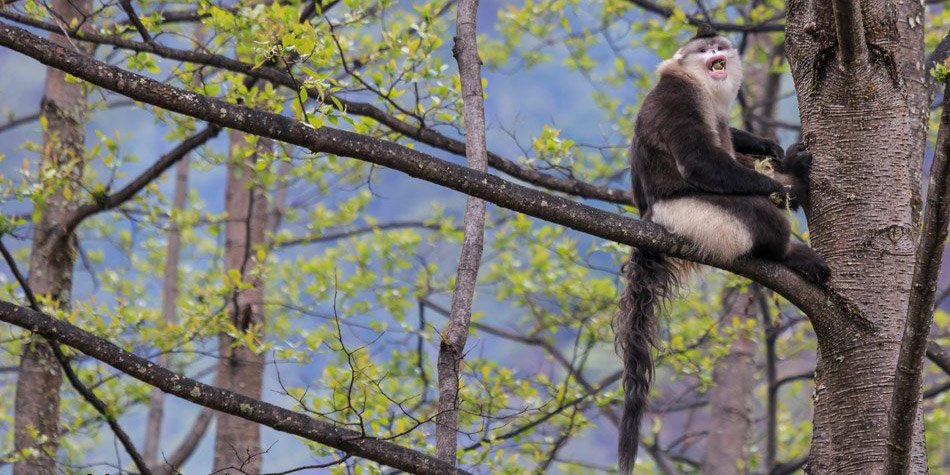
Too often, we read stories about animal species that go extinct even before scientists can name or study them. There are, however, some stories with a happy ending, or at least whose ending doesn’t look as bad as in the past.
The most incredible thing is that more and more of these stories come from a country that is notoriously famous for not doing much to protect our planet: China. At least, this is what happened for far too many years, but, as I said, many things are changing, even in China. I had the privilege to witness a small part of this change firsthand, and I’ll talk about it in this post.
But let me first briefly talk about some conservation success stories in China. I’ll also talk about what The Nature Conservancy (from now on TNC) is (they have offices also in Hong Kong and China), what they are doing, and I’ll give some info about the beautiful Black Snub-Nosed Monkeys (also known as Yunnan Golden monkey).
Some conservation success stories in China
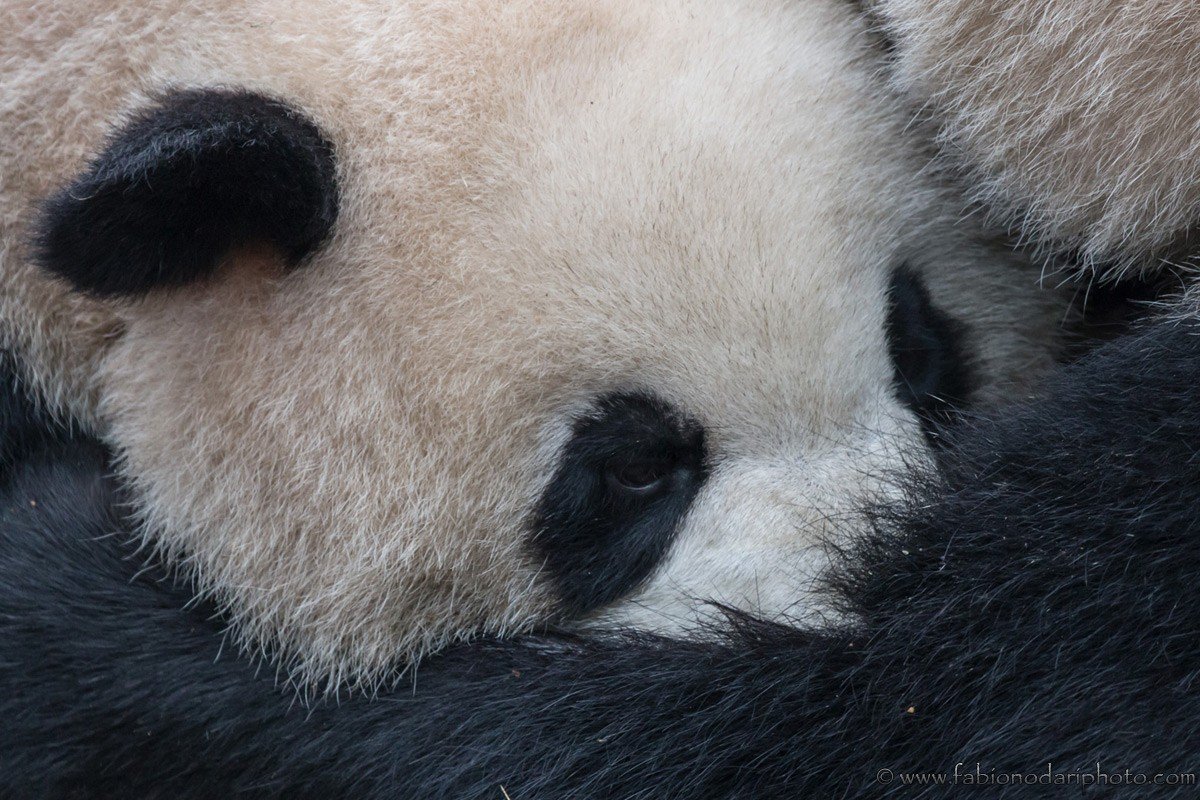
Among the conservation success stories, the most famous is, without a doubt, the Giant Panda (you can read more about the Chengdu Research Base of Giant Panda Breeding here). The first National Nature Reserve was established in Wolong in 1958, but back in those days, not many people had the competence and knowledge to do the right thing. Many believed the best way to protect the pandas was to cage them.
In the 1990s, a better understanding of the species and several laws (including gun control and the removal of resident humans from the reserves) helped their chances of survival. Today, there are almost 2000 in the wild, and their number is rising.
Everybody knows Pandas, and everybody loves them. But this is not a coincidence. There is a specific reason why there are so many videos of cute Pandas. The best way to protect a species is to make the public love it. People who feel something for a species will be moved to make donations, protest when companies threaten their habitat, denounce poaching, and so forth…
This is exactly what happened with Pandas. Of course, the fact that Pandas are cute does help the cause, but the point is that when a species must be saved, people are very important.
China owns almost all the pandas in the world and owns all future offspring of all pandas. The only exception are two pandas in Mexico.
This works so well that today, the Pandas are no longer endangered. Of course, this doesn’t mean the Panda is saved forever, but it’s great news.
Another story with a happy ending is about the Milu Deer or Père David’s deer. This species of deer has long been famed for having the head of a horse, the hooves of a cow, the donkey’s tail, and the deer’s antlers. How the species was spared from extinction is an unlikely tale spanning lifetimes and involving a French missionary, an English duke, and a Slovak-born American zoologist.
This is pretty much what happened, and you can read more about it here: In the late 19th century, the world’s only herd belonged to Tongzhi, the Emperor of China. The herd was maintained in the Nanyuan Royal Hunting Garden in Nan Haizi, near Peking (Beijing). In 1895, one of the walls of the hunting garden was destroyed by a heavy flood of the Yongding River, and most of the deer escaped and were killed and eaten by starving peasants.
Fewer than thirty Père David’s Deer remained in the garden. Then, in 1900, during the Boxer Rebellion, troops occupied the garden, and the remaining deer were shot and eaten, leaving the Père David’s deer extinct in its native China.
A few of the deer had previously been illegally transported to Europe for exhibition and breeding. After the extirpation of the Chinese population in 1900, Herbrand Russell, the 11th Duke of Bedford, was instrumental in saving the species. He acquired the few remaining animals from European zoos and nurtured a herd at Woburn Abbey.
The reintroduction of Père David’s deer to China began in 1985 in the spot where they had last been seen alive in their native country. This was followed in 1986 and 1987 by a second and third herd.
Today, there are about 5,500 Milu deer in China, with as many as 600 living in the wild in Hubei and Hunan provinces along the Yangtze River and in Jiangsu province. The current world population stems from the Woburn Abbey herd. This is quite an incredible story!
What is The Nature Conservancy

The Nature Conservancy (TNC) is a charitable environmental organization based in Arlington, Virginia, United States. Its mission is to “conserve the lands and waters on which all life depends.” Their work focuses on the global priorities of Lands, Water, Climate, Oceans, and Cities. It was founded in 1951 and now impacts conservation in 69 countries.
It has over one million members and has protected over 48,000,000 ha of land and thousands of miles of rivers worldwide. TNC also operates over 100 marine conservation projects globally and is the largest environmental nonprofit by assets and revenue in the Americas. TNC rates as one of the most trusted national organizations. Some of the members include former U.S. Senator Bill Frist, chairman of the Alibaba Group Jack Ma, and Chairman and Co-founder of The Bridgespan Group Thomas Tierney.
This NGO is very important and was the first foreign NGO devoted to protecting the environment that was allowed to work in China.
Recently, I had the chance to meet several members of TNC working on a different project in China (through TNC Hong Kong), and I asked them a few questions about the challenges of working in this unique country.
What I understood was that many things are changing. Even if there are still many problems, more and more people (especially the younger generations) are becoming aware of the importance of protecting and respecting our planet. China is going through an industrial revolution, and like what happened in Europe, nature conservancy hasn’t been at the top of the list of important things to do.
But because of this economic boom, people are now more educated, have more money to spend, and more time to travel. So, they slowly begin to appreciate the beauty of nature and the importance of protecting it. There is still a long way to go, but at least the first steps in the right direction have been taken.
This introduction brings me back to the main topic of this post: the Black Snub-Nosed Monkey.
Yunnan Snub-Nosed Monkey 滇金丝猴: A Conservation Success Story by TNC
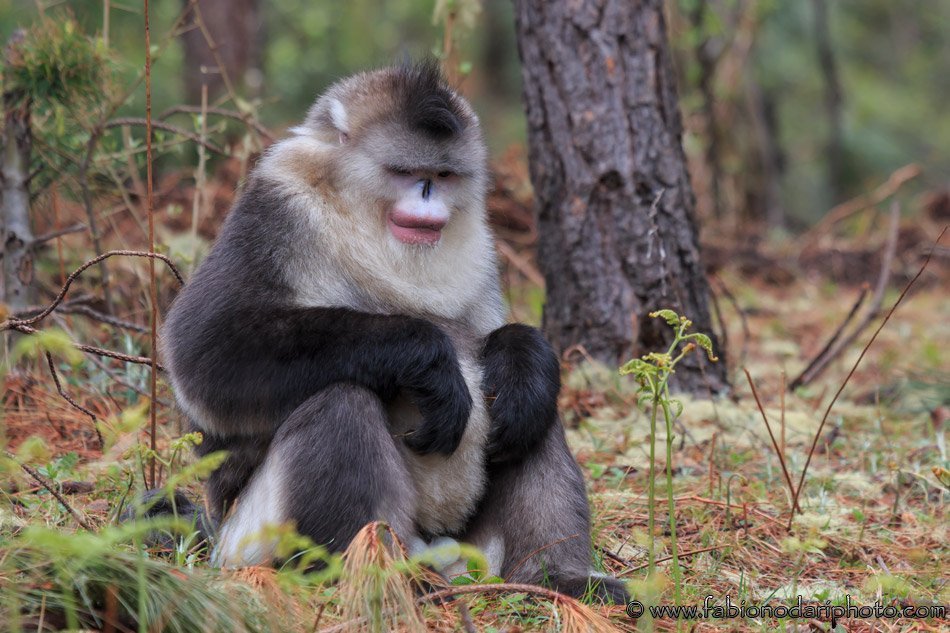
Let’s face it: the Black Snub-Nosed Monkeys are not the cutest animals you have ever seen. Aren’t they? First, they don’t have a nose (in case you haven’t noticed it). Second, they have a really weird Elvis-like hairstyle. But I love them anyway, and I DO believe they are beautiful!
These features are what make them unique and immediately recognizable even by someone who doesn’t know much about wildlife. These animals are peculiar also in many other aspects.
Black Snub-Nosed Monkey facts
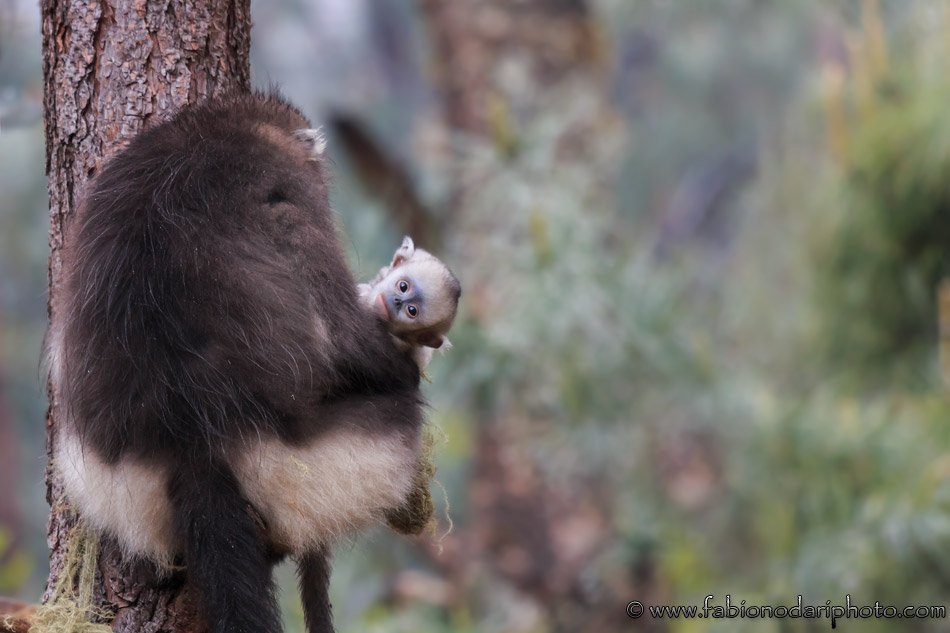
These are some interesting facts about the Black Snub-Nosed Monkey:
- Scientists in the 1890s discovered it, then lost it and thought it to be extinct until 1962.
- The Black Snub-Nosed Monkey was almost completely unknown by the scientific community until the 1990s.
- They make their home at altitudes higher than any other primate except humans. They can survive at an altitude of up to 4700 meters.
- The Black Snub-Nosed Monkey lives in very large super-groups that are made up of several families. Each of them has a single dominant male with many females.
- Their favorite food is the Spanish moss that grows abundantly in the remote forests of South China, but it takes a lot to reform. So the monkeys move fast, looking for new sources of food.
- The Black Snub-Nosed Monkey (Rhinopithecus Bieti – 黑金丝猴, also called 滇金丝猴), native of Yunnan, is not the same as the Golden Snub-Nosed Monkey (Rhinopithecus Roxellana – 川金丝猴) that is native of Sichuan. The Black Snub-Nosed Monkeys left in the wild are about 3000, while the Golden Snub-Nosed Monkeys range from 8,000 to 15,000. The Tonkin Snub-Nosed Monkey is yet another species that lives in northern Vietnam.
- Due to their particular nose, they sneeze quite often when it rains.
- They give birth about once every two or three years.
- The main danger for this species is habitat loss (due to the illegal logging and removal of dead trees) and illegal hunting.
- The Black Snub-Nosed Monkeys are mainly found in the Baima Snow Mountain National Park (白马雪山).
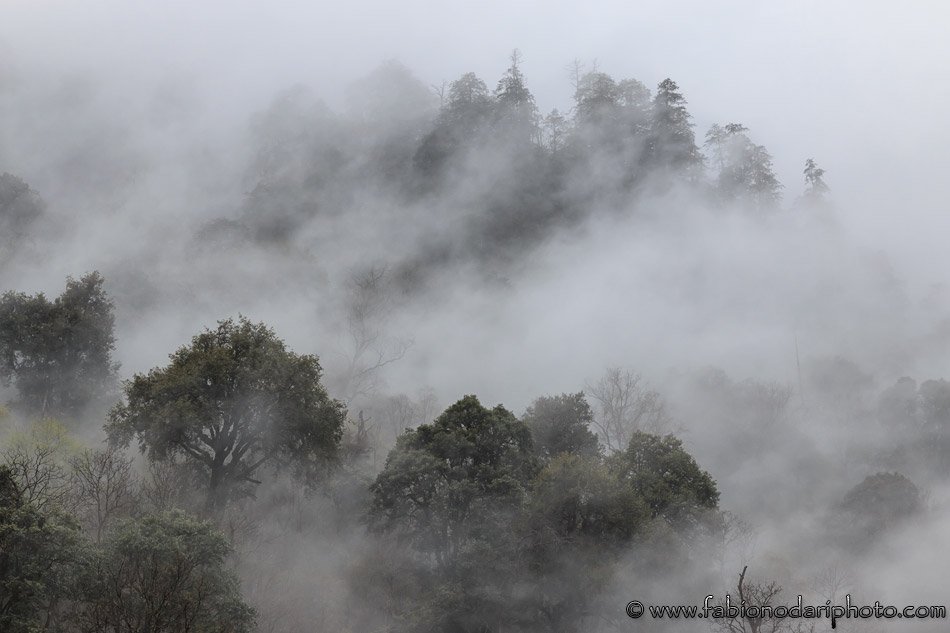
The Black Snub-Nosed Monkey lives in these remote forests in Southern China.
What is the role played by TNC in saving the Black Snub-Nosed Monkey? This article pretty much explains everything. Long story short, the Chinese biologist Long Yongcheng spent over 10 years searching for the beautiful Yunnan Black Snub-Nosed Monkeys in the wild.
Equipped with just a telescope and notebook — no tent, no camping supplies — Long trekked into the thick alpine forests alone, leaving only to seek food from local herders and farmers. It took him four weeks to catch his first glimpse of live monkeys.
Sadly, at first, he got very little support. No one cared about his research. He almost gave up, but finally, in 2001, he found the right partner: TNC. Since then, everything changed. The number tripled from 1000 to 3000, and it keeps rising.
Where to photograph the Black Snub-Nosed Monkeys
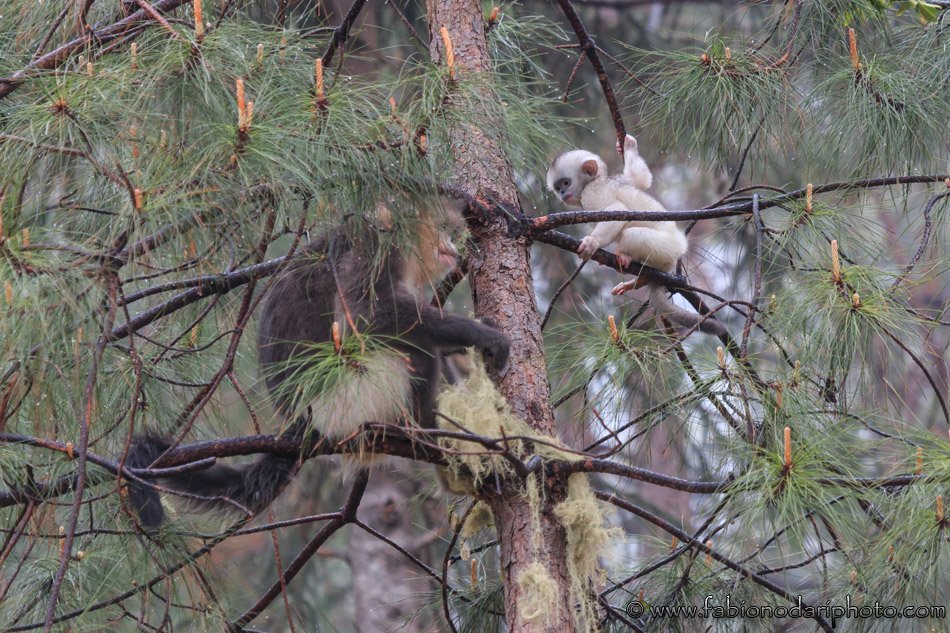
There is another good news: if you want to see the Black Snub-Nosed Monkey in the wild, it’s possible to do so, and you don’t have to spend 10 years looking for them. 🙂 You’ll have to get to TaCheng (塔城) about 4 hours by car from Lijiang, in Yunnan. Alternatively, you can also get there from Shangri-La.
Once in the park, you’ll have to pay a 100RMB fee to get inside (one ticket is valid only for one day if you want to watch the monkeys).
There are a few accommodation options: I didn’t find any options on Booking.com, but you can find something on Trip.com. I stayed in a very nice traditional Lisu house.

It was a basic accommodation that didn’t even have a heating system despite being at an elevation of about 2500 meters, but I loved it anyway.
Why is it so easy to see the monkeys in TaCheng? A particularly harsh winter forced the starving Snub-Nosed Monkeys closer to the village, and since then, a group of rangers has fed the monkeys regularly, thus making this group not entirely wild. They are free to come and go whenever they like, but they tend to stick around.
Some will conclude that interfering with these monkeys’ lives is not good, but I disagree. And this is why. As I said before, to successfully preserve an endangered species, people must love it; to love an animal, people must see it.
Seeing the monkeys in their environment is better than in a zoo, so the scientists sacrificed this group for the sake of the whole species.
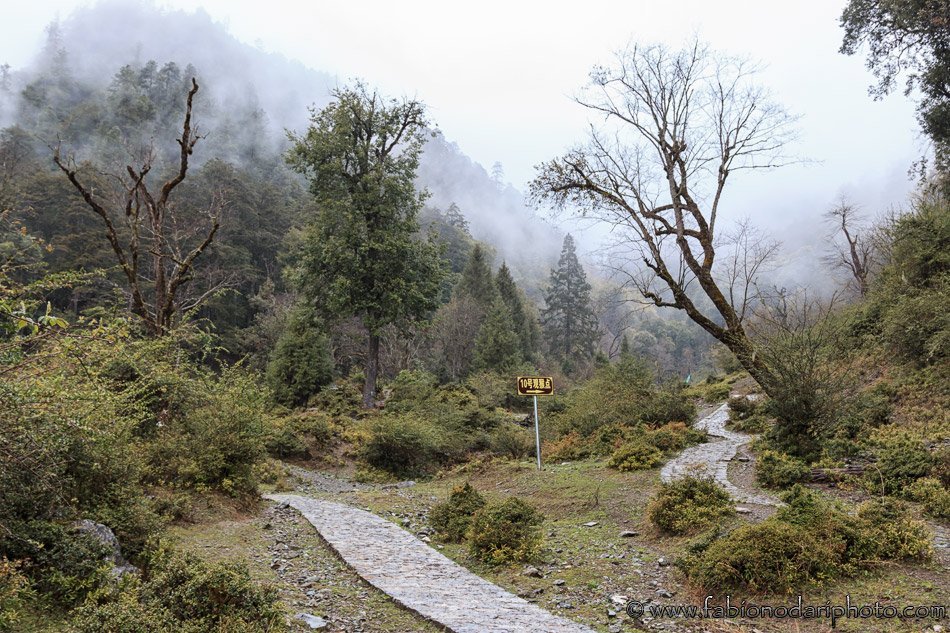
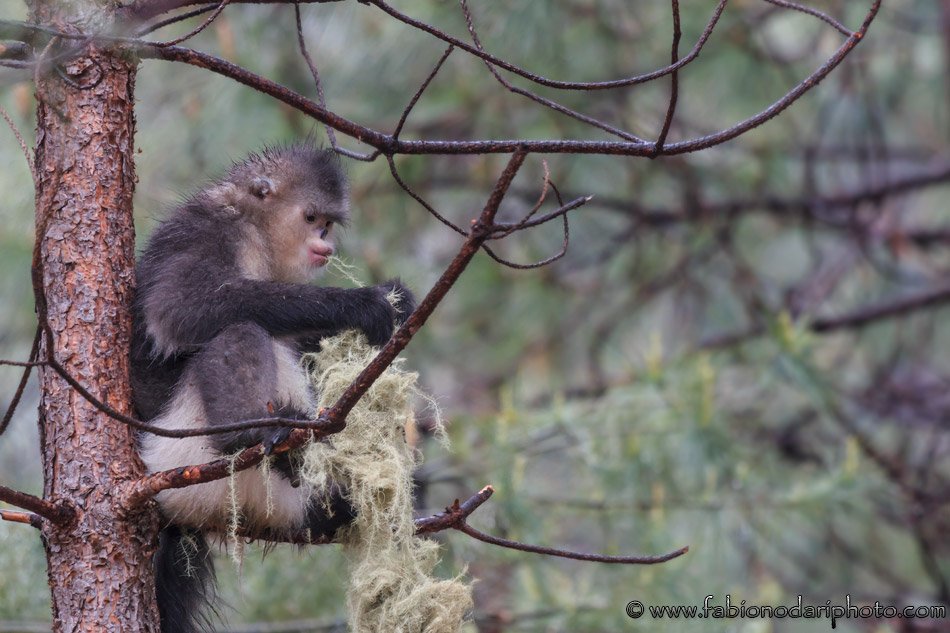
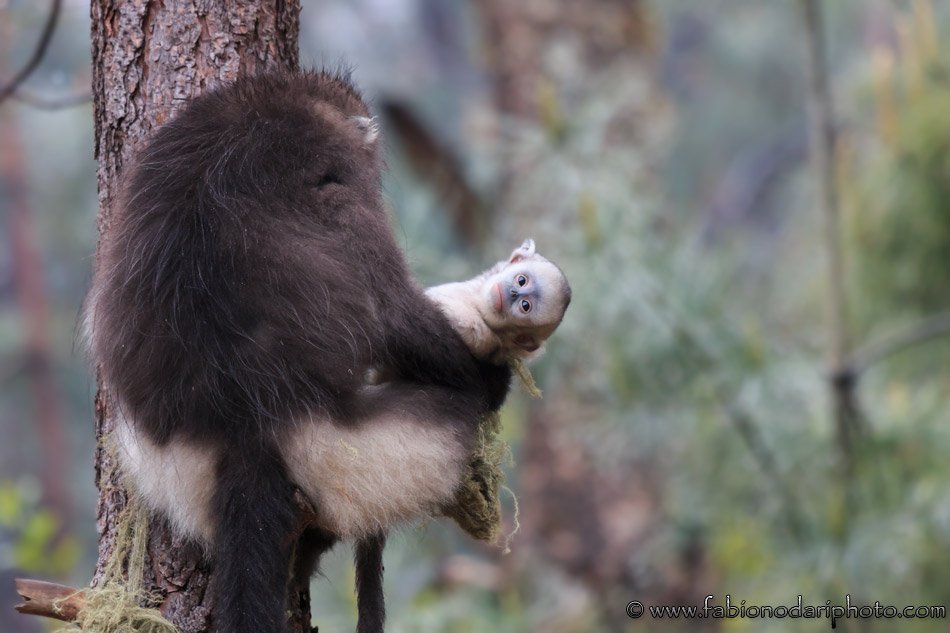
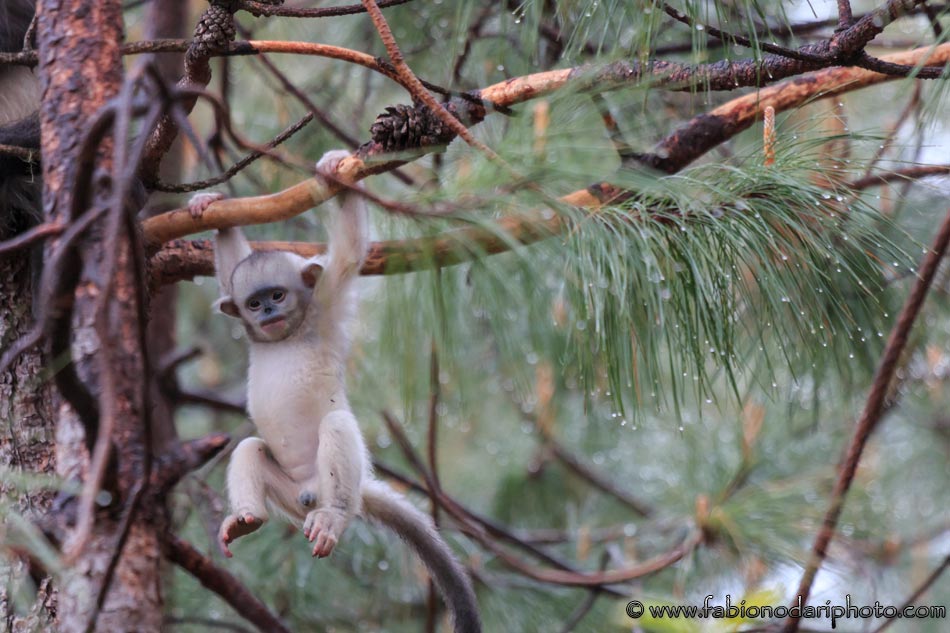
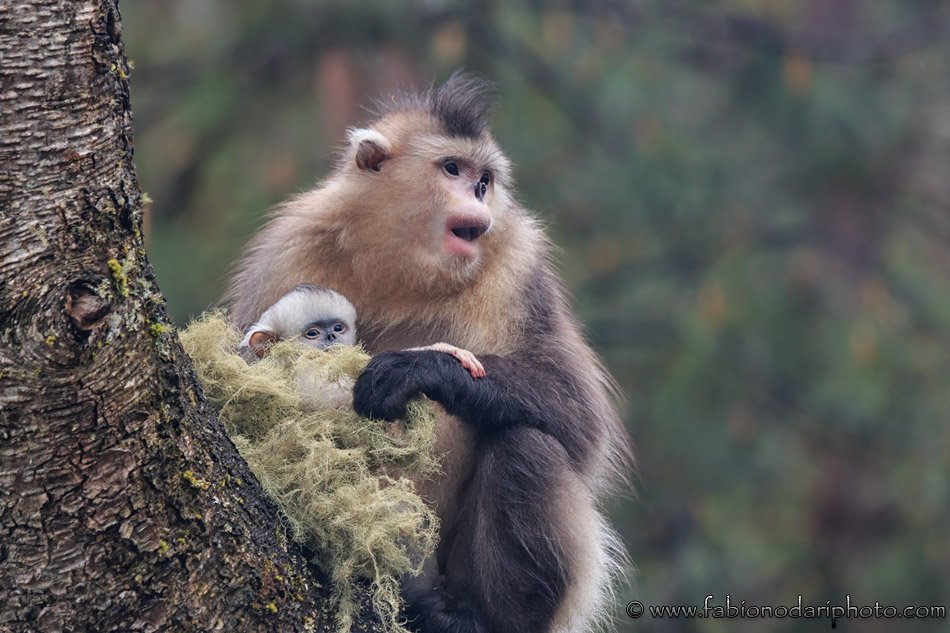
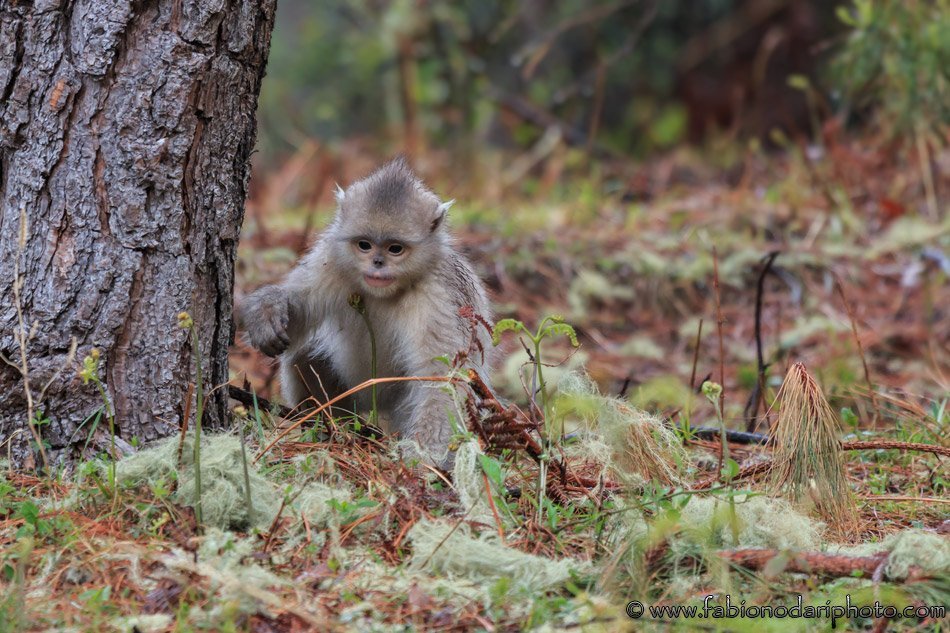
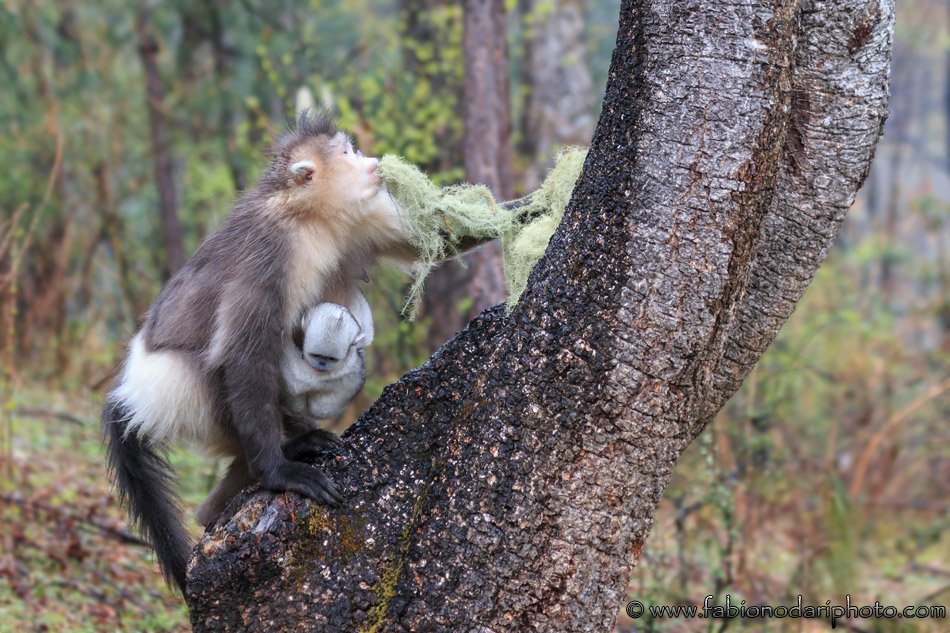
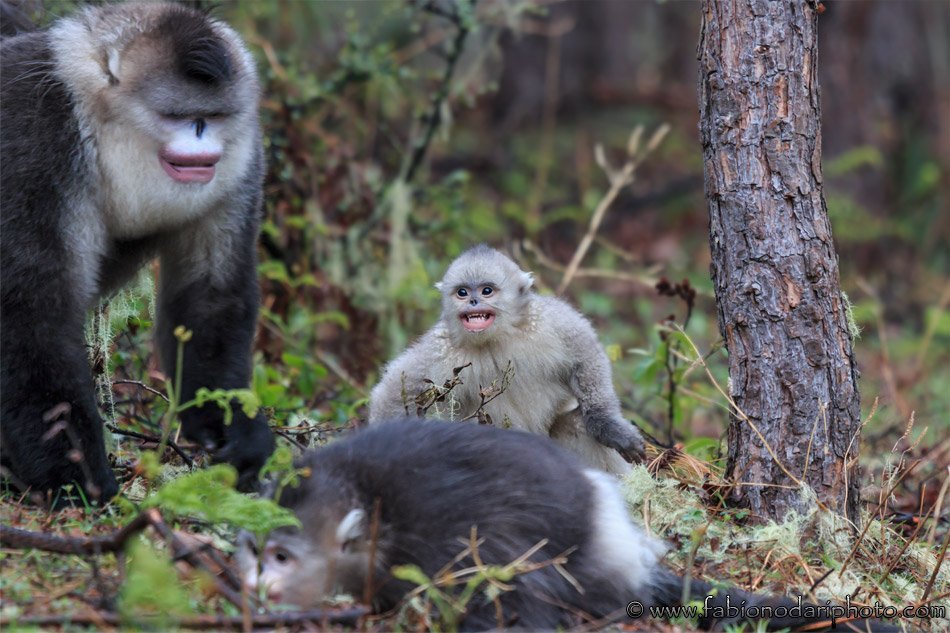
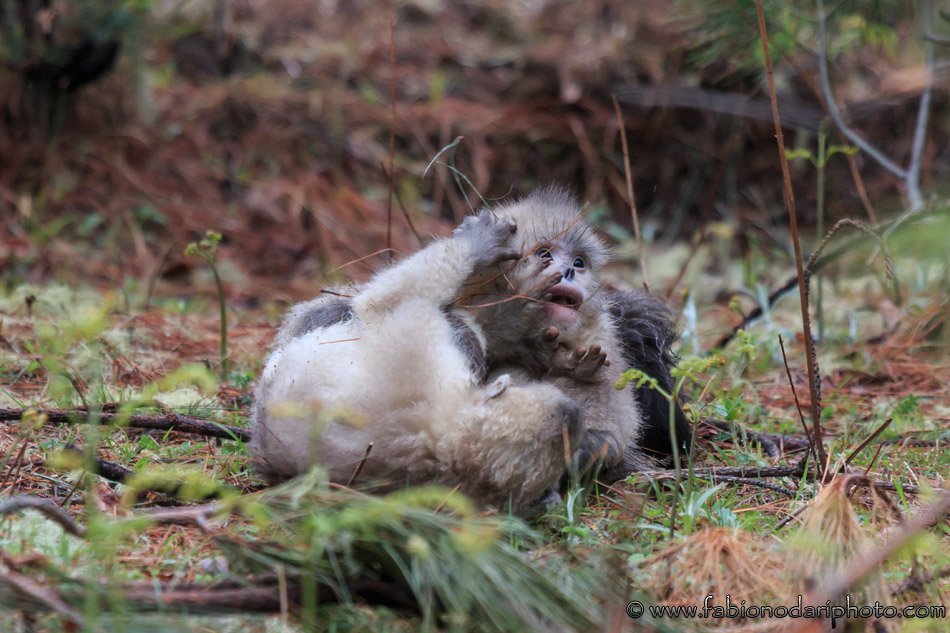
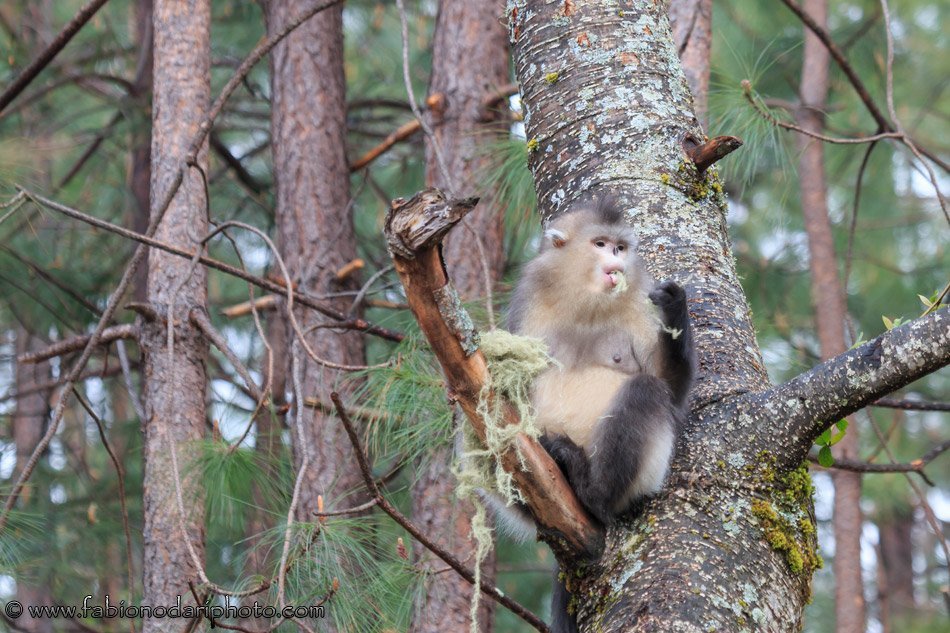
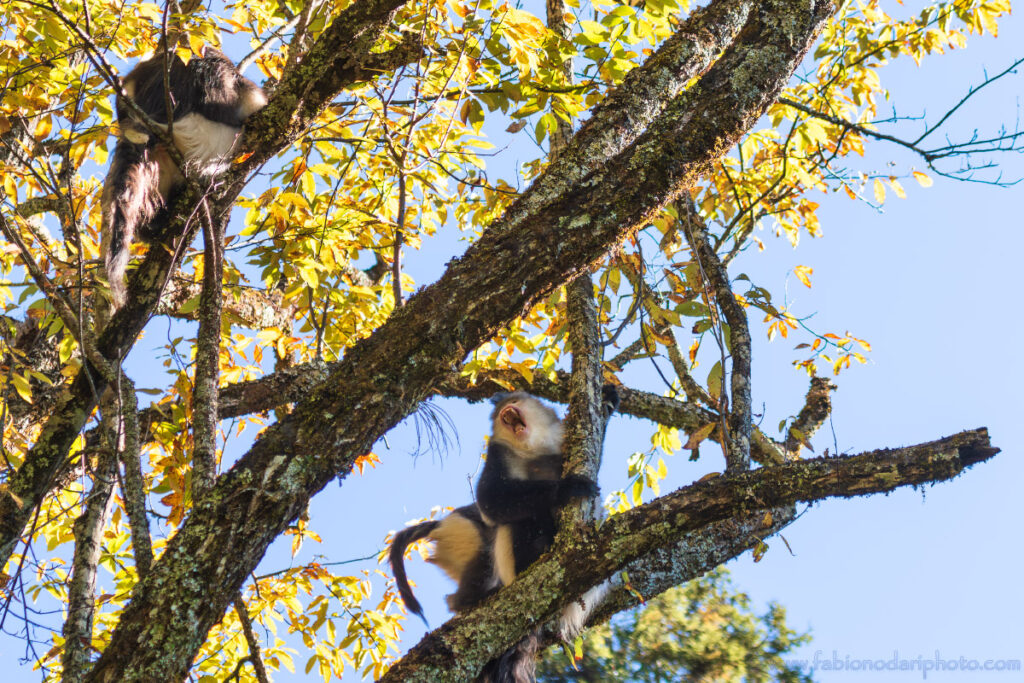
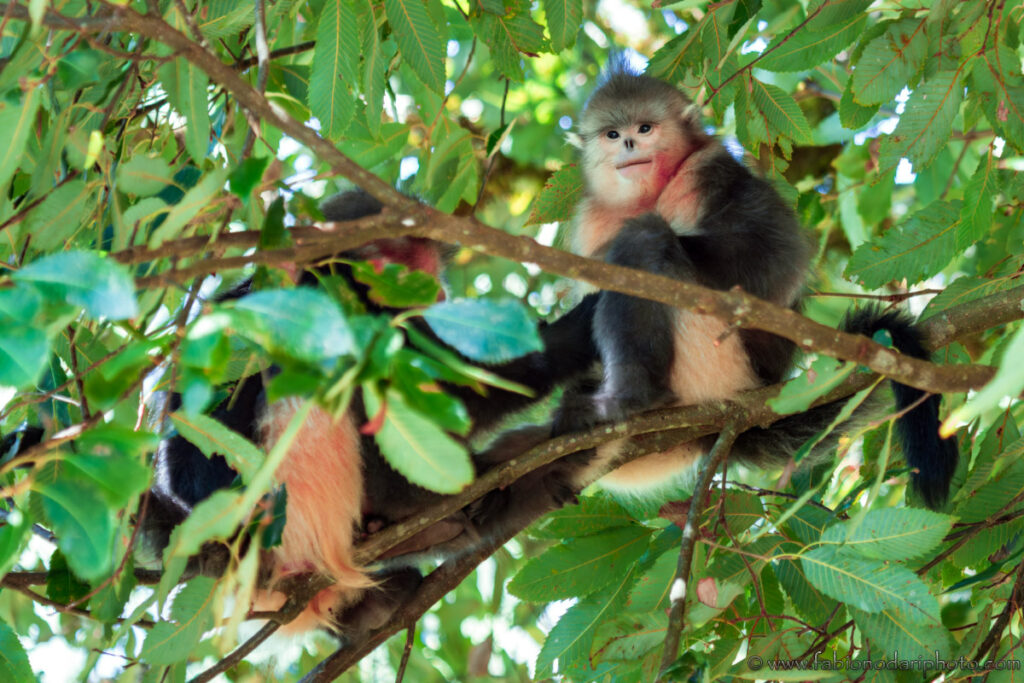
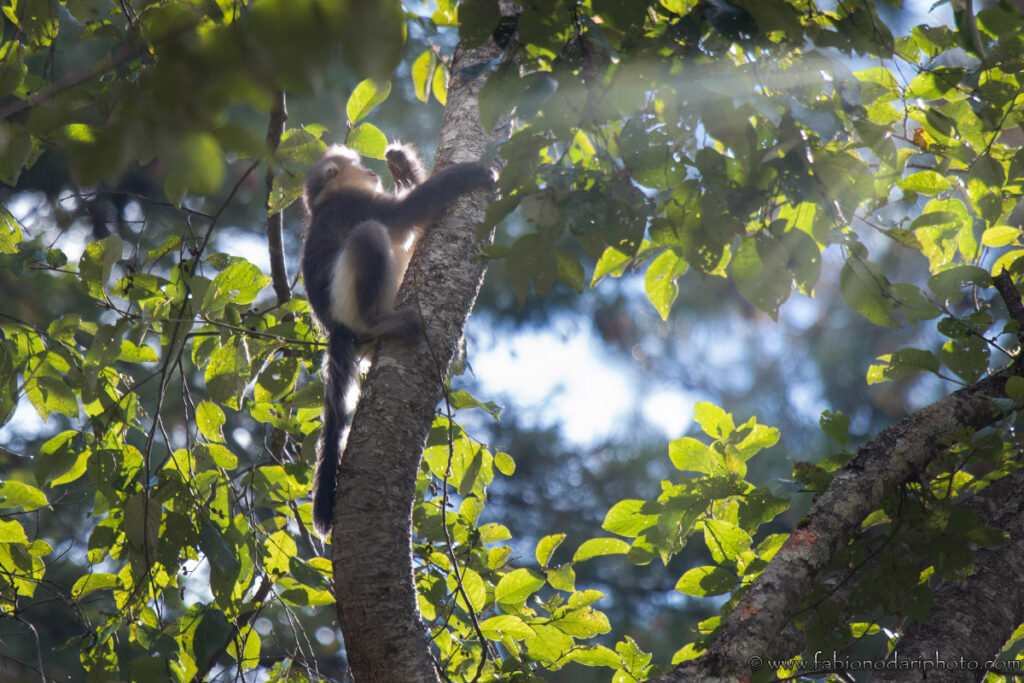
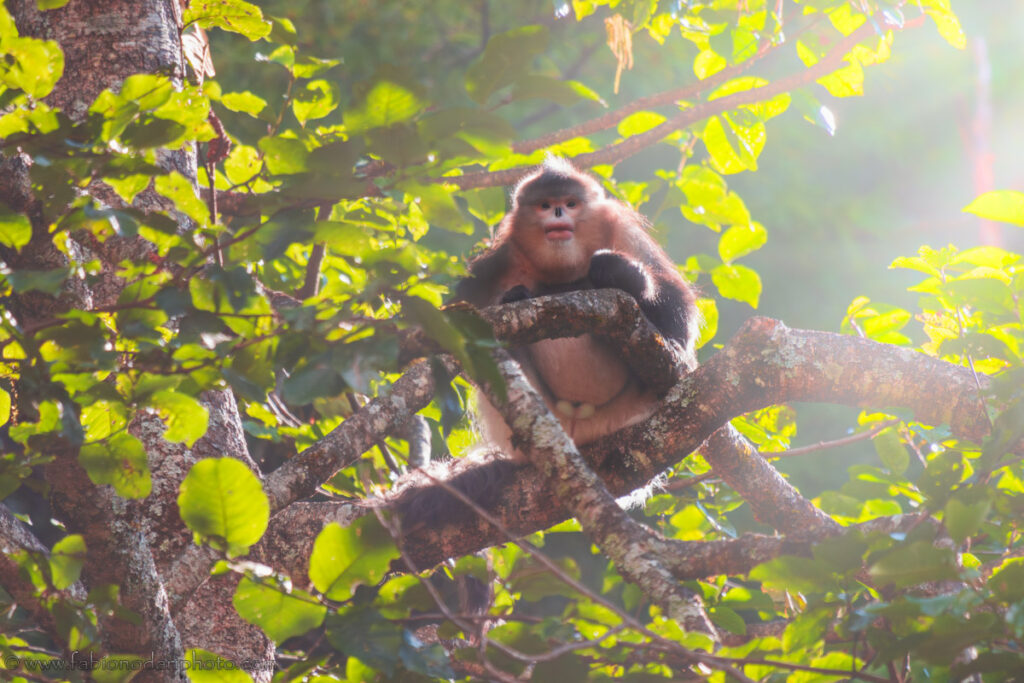
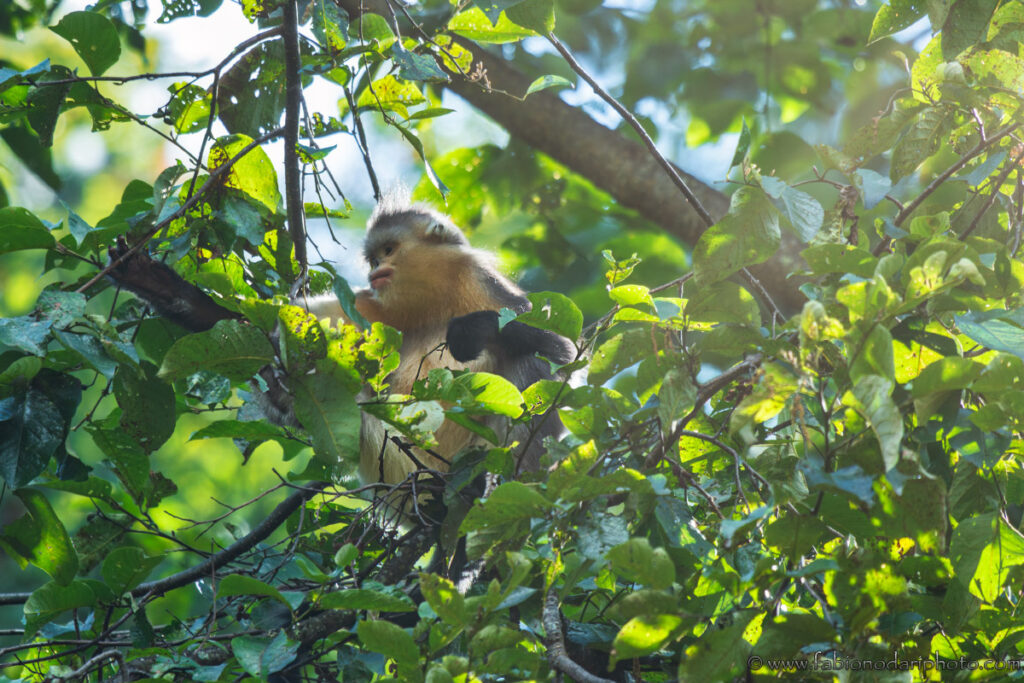
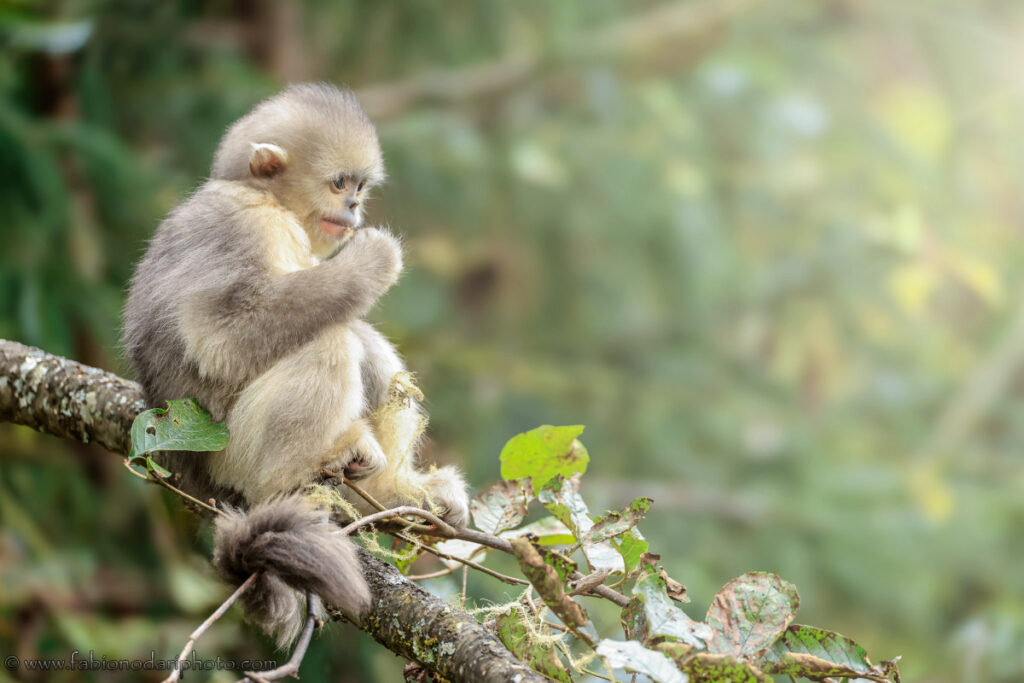
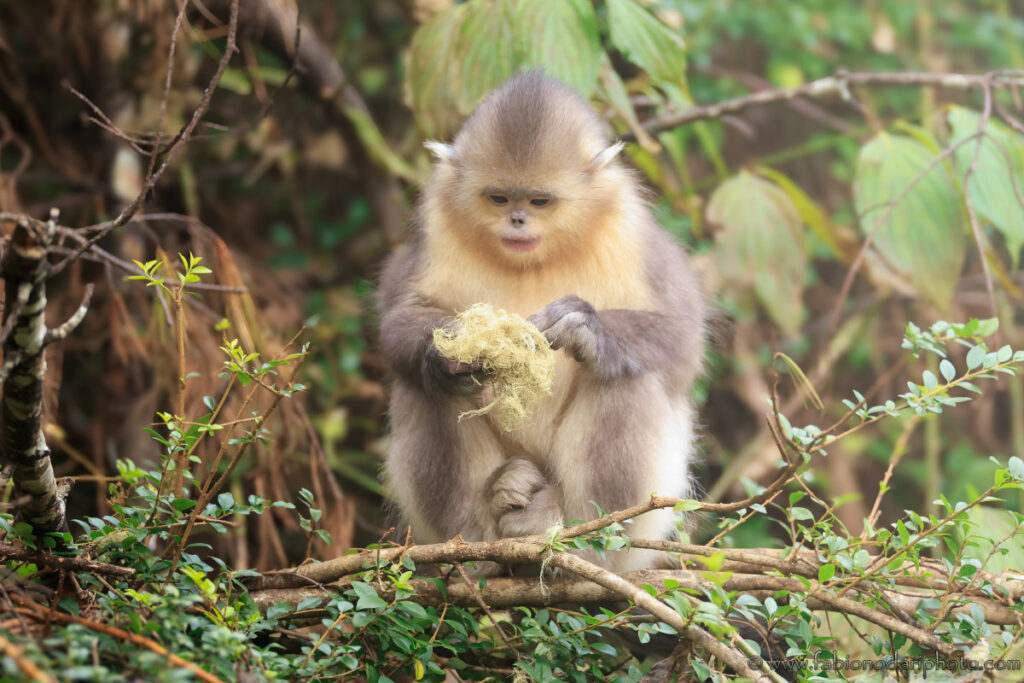
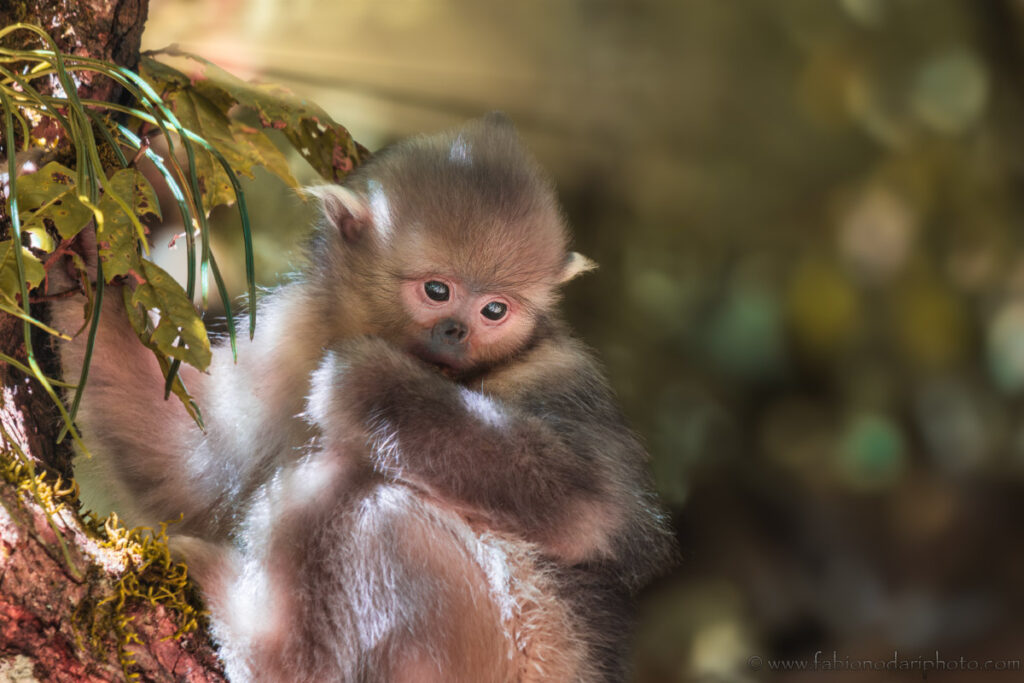
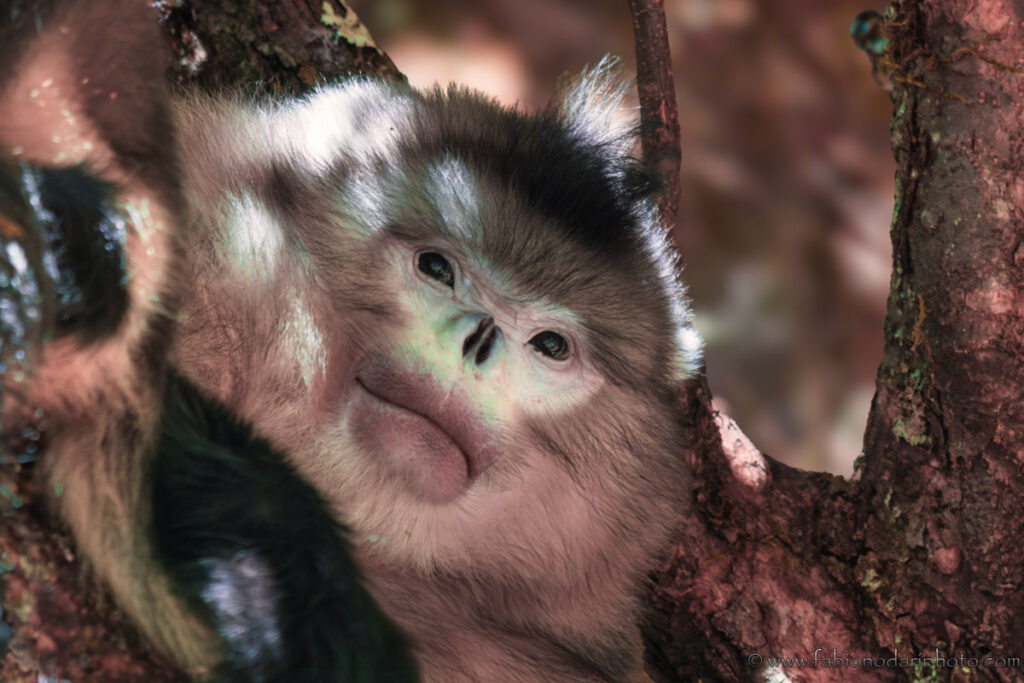
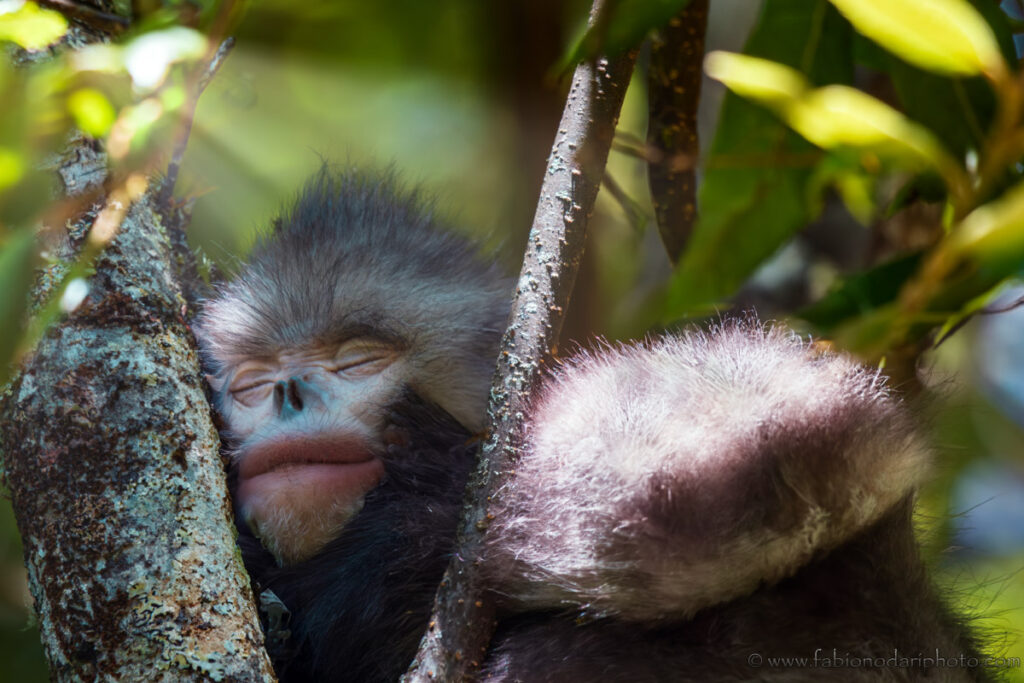
What’s the secret to successfully protecting endangered species in China?
Establishing a National Park is not enough to protect a species. This is because these wild animals mostly live in the same areas as the local people, who are often very poor.
They hunt animals and destroy their environment mainly because they are uneducated about environmental conservation. They need food and wood in their daily lives. Plus, most of them are old and believe in traditional Chinese medicine that teaches that animal bones have some healing powers. It’s really hard to eradicate those beliefs.
The best solution to this problem is to make the local people part of the conservation efforts. Creating new jobs like rangers, guest houses, and so forth so that people won’t have any reason to threaten wildlife and the environment. Raise awareness and help hunters switch to other livelihoods.
For example, some hunters are becoming farmers. In one Conservancy-funded pilot project, a former hunter is now growing more mushrooms, making far more money than before.
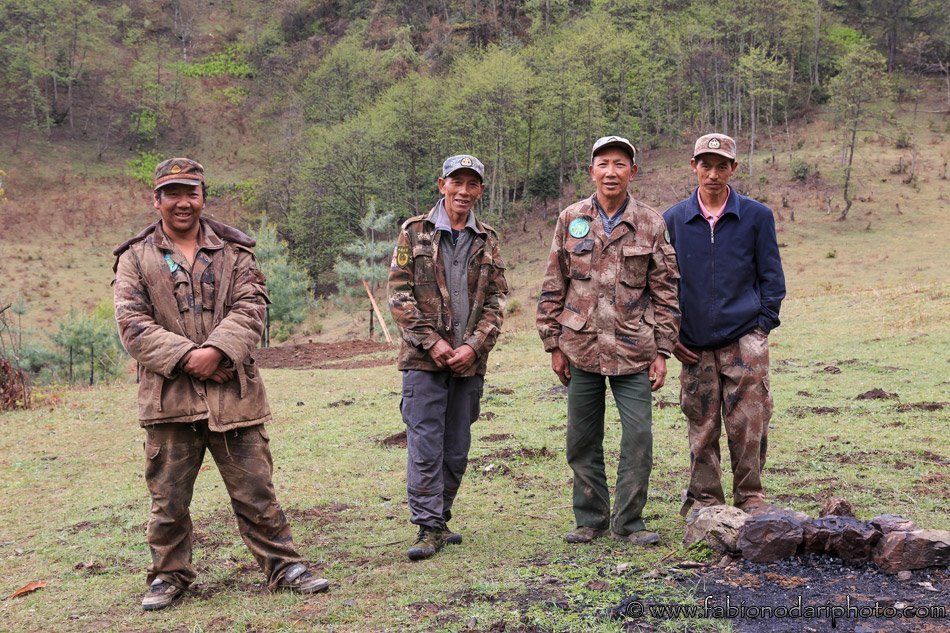
Chinese rangers, who were once hunters and farmers, thus threatening the environment, are now involved in protecting the Snub-Nosed Monkeys.
Last but not least, it’s important to educate the younger generations. They are the future. The new generations are the ones who can save endangered species.
The future seems to be a bit bright in China for the Black Snub-Nosed Monkeys.
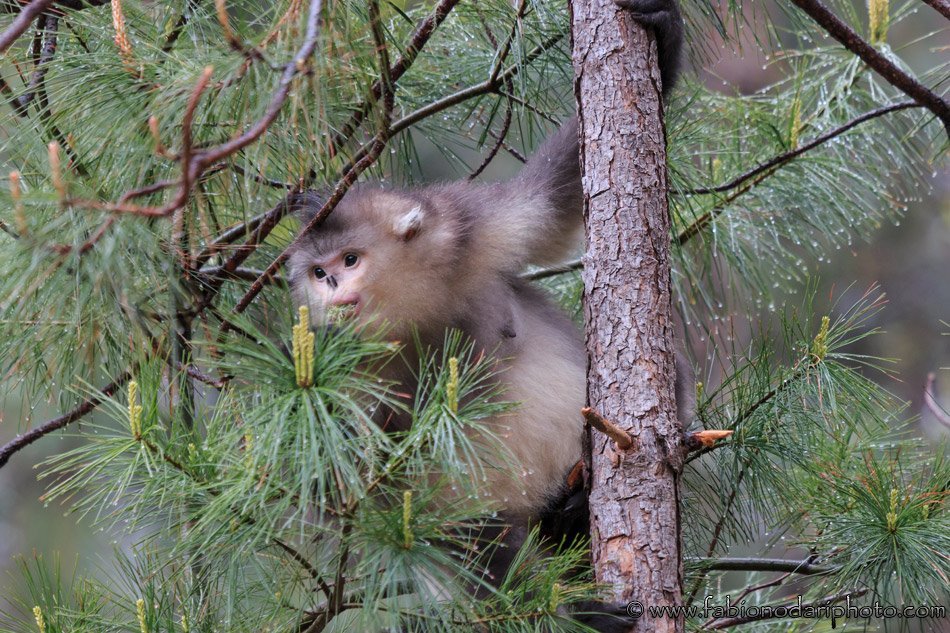
You can also support the Conservancy’s efforts to save the Black Snub-Nosed Monkey when you support TNC work.
A big thank you to the TNC staff in Lijiang and Heqing, who are working so hard and passionately to protect the Wild Wonders of China: well done! A big thanks also goes to Michele, one of the Hong Kong staff members of TNC.
Reminders for your trip to Southern China

- Get a VPN before you arrive in China. Internet is censored, and you won’t be able to use Gmail, Google, Facebook, etc without it. This is the VPN that I use.
- Remember, Winter or early Spring can be quite cold.
- It’s better to use a zoom lens like 100-400mm to photograph the Snub-Nosed Monkeys because they can move fast. A fixed lens will give you a better range, but it might be problematic if the monkeys are too close. Remember to bring a tripod.
- The monkeys can be seen only in the morning between 9:00 am and 11:00 am. So you don’t need to spend more than one night in Tacheng unless you want to take more pictures. In that case, you’ll have to buy another ticket.
- Here is the complete travel guide to China.
Here, you can find more pictures of the wildlife in China and other parts of the world. If you want to know where to photograph the Snow Leopard, don’t miss this post. If you are thinking about moving to China, check out my article.



Hi I wish to visit China for golden and black snub nosed monkey. Need a help from you about the travel itinerary.
Please do reply back.
Shaon
Sent you a DM